The casebooks of Simon Forman and Richard Napier are the records of two astrological practices from early modern England, compiled over several decades by these two astrologers and a host of associates. Forman and Napier were markedly different from each other: Simon Forman, based in or just outside London (beyond the reach of the College of Physicians), had worked and struggled to success through a failed apprenticeship and an abortive university education. He was pugnacious, ambitious, and controversial. Richard Napier, in contrast, at his rectory in Great Linford, Buckinghamshire, was quiet and shy. A younger son in a wealthy family, he had taken up his living after attending Exeter College, Oxford, but found himself unable to bear preaching so hired a succession of curates to assist him in his duties. Whatever the differences in character and background between Forman and Napier, they liked each other sufficiently when they met in 1597 for Forman to take Napier on as his student in astrology. By the time of Forman’s death in 1611 Napier’s practice matched Forman’s own in numbers and in the social status of its clients.
Napier sought assistance in his astrological practice just as he did in his pastoral duties — often from the same people. His associates included several of his curates: Gerence James, Robert Wallis, and Ralph Ruddle, notably, and Theodoricus Gravius may also belong in this list (the records listing Napier’s curates are incomplete). The hand of a man called Mr Willoughby appears several times, though it is unclear precisely who Mr Willoughby was. Other associates are currently known only through their handwriting. Towards the end of his life, Napier was aided by his nephew and namesake Richard (later Sir Richard) Napier, who eventually took over the Great Linford practice from him. Between them, Napier’s associates helped him write out entries, draw charts, prescribe treatments, and held consultations themselves in his absence, just as Napier in turn had done for Forman when Forman was away. In addition to all of these are hints at the wider network of astrologers around Napier: as well as Forman, who visited and helped early in Napier’s practice, we can find scattered references to Mr William Bredon, parson of Thornton, Buckinghamshire; Mr Lawrence of Luton Hoo (where Napier’s brother Sir Robert Napier lived); Mr Pots; and a ‘Forrestus’; all of these men were credited with aiding in particular consultations or drawing up certain charts.
Besides these associates, the practitioners were helped by others who worked to turn the discussion of the consulting room into practical courses of treatment. In this regard Napier was assisted by two of his servants, William Roughead (PERSON15478) and William Gadstone (PERSON23344). Roughead in particular is recorded as carrying out bloodletting for him (see for instance CASE28656 and CASE35525), while Will Gadstone seems to have collected money on Napier’s behalf: in November 1618 Gadstone paid Napier £10 ‘for physick stuffe’, and Napier’s casebooks include many such payments at regular intervals. In later years, Napier also received help from alchemical assistants working in his laboratory: Mr Rhenish, for example, advised him on treatment in an entry of 1627 and supplied him with ‘Bullets’ (pellets of some sort) whose use Napier prescribed in an entry in 1632.
This page lists the people who appear in the casebooks as practitioners in these two practices — Forman’s, based around London, and Napier’s, centred on Great Linford. Each person on the list is accompanied by links to a person page and to the entries in which that person was practitioner. For details on how to recognise the various hands in the casebooks, see our guide to the handwriting.
- Simon Forman (1552–1611), PERSON2824; see also all of the entries in which Forman is listed as a practitioner
- Richard Napier (1559–1634), PERSON5218; see also all of the entries in which Napier is listed as a practitioner
Their assistants and associates
- Mr William Bredon (d. 1638), PERSON28325; see also the entries in which Bredon is a practitioner
- Theodoricus Gravius [Theodore Graw] (fl. 1600–1661), PERSON38835; see also the entries in which Gravius is a practitioner
- Gerence James [Marks] (1568–1646), PERSON13172; see also the entries in which James is a practitioner
- Mr Lawrence, PERSON13611; see also the entry in which Lawrence is a practitioner
- Sir Richard Napier (1607–1676), PERSON18784; see also the entries in which Sir Richard is listed as a practitioner
- Mr Pots, PERSON56949; see also the entry in which Pots is listed as a practitioner
- Mr Ralph Ruddle (1600–1689), PERSON57997; see also the entries in which Ruddle is listed as a practitioner
- Robert Wallis (1586–1666), PERSON36434; see also the entries in which Wallis is listed as a practitioner
- Mr Willoughby (fl. 1605–1622), PERSON21200; see also the entries in which Willoughby is listed as a practitioner
- Forrest, PERSON49149; see also the entry in which Forrest is credited with having drawn up the astrological chart
- Unidentified scribe (1596–1600), PERSON8221
- Unidentified (1611–1612), PERSON27036; see also the entries in which this person is listed as a practitioner
- Unidentified (1622–1624), PERSON27077; see also the entries in which this person is listed as a practitioner
- Unidentified scribe (1628–1630), PERSON38853; see also the entries in which this person is listed as a practitioner
- Unidentified scribe (1628–1631), PERSON38843; see also the entries in which this person is listed as a practitioner
- Unidentified scribe (1629–1631), PERSON8464; see also the entries in which this person is listed as a practitioner
- Unidentified scribe (1633–1634), PERSON38861; see also the entries in which this person is listed as a practitioner
- Unidentified scribe, PERSON38868; see also the entries in which this person is listed as a practitioner
- Unidentified scribe, PERSON42176; see also the entries in which this person is listed as a practitioner


